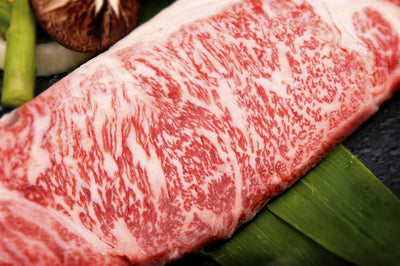Exploring the Exquisite Delight of Japanese Wagyu in the UAE
Stepping into the world of Japanese Wagyu – marbled beef from the Land of the Rising Sun, is an experience not just limited to luxurious dining but a cultural exploration like no other. The UAE, with its thriving culinary scene, has embraced the art of Wagyu not merely as a dish but as the centerpiece of an intricate and appetizing tapestry.
The Origins of Japanese Wagyu
To understand the allure of Japanese Wagyu, it’s essential to delve into its origins. The term 'Wagyu' translates to 'Japanese cattle', originating from four native breeds: the Japanese Black, Japanese Brown (Akaushi), Japanese Polled, and Japanese Shorthorn.
A Treasured Heritage of JapanJapanese Wagyu's extraordinary marbling and tenderness are a result of centuries-old breeding practices that have endeared it to connoisseurs worldwide. These breeds have been crafted meticulously, often with a reverence reserved for artistry.
Traditional Breeding PracticesTraditionally, Wagyu cattle were bred in tranquil, stress-free environments with a focus on natural feeds and water. The deep respect for the cattle's wellbeing not only persists but is a foundational principle in the production of authentic Japanese Wagyu.
The Unique Characteristics of Japanese Wagyu
What sets Japanese Wagyu apart goes beyond its origins; it's the meat itself that tells a tale of gastronomic delight.
Marbling and TendernessCharacterized by fine, high-quality marbling, Wagyu becomes a canvas of intramuscular fat, creating a buttery texture and exceptional tenderness. This unique feature is a result of slow and patient cattle rearing, where the flavors develop over an extended period.
Culinary Experience and Flavor ProfileThe flavor profile of Japanese Wagyu is as exceptional as its marbling, offering a rich, umami-laden taste that is incomparable. Its buttery texture melts in the mouth, leaving behind a savory resonance that's a harmonious synergetic of indulgence.
The Growing Popularity in the UAEThe UAE has embarked on a love affair with Japanese Wagyu, reflecting a broader global trend of appreciation for this premium meat.
A Demand for the ExtraordinaryAs UAE residents become more discerning, there is a growing demand for high-quality, premium cuts. Wagyu, with its impeccable reputation, has become a focal point in the quest for gastronomic excellence.
Influencing an Ever-Evolving Culinary SceneThe influx of Wagyu has not only adorned the menus of high-end restaurants but has also influenced home cuisines. Both chefs and home cooks are finding innovative ways to utilize this delicacy, marking a significant evolution in culinary practices.
How to Select and Prepare Japanese WagyuAppreciating Wagyu requires an understanding of how to select and prepare it to bring out its best qualities.
Choosing the Best CutsSelecting Wagyu is a meticulous process that involves assessing the color, marbling, and fat distribution within the meat. Quality ratings like 'A4' and 'A5' offer a benchmark for the degree of marbling and fat quality.
Cooking Techniques and RecipesThe method of cooking is a pivotal part of the Wagyu experience. From grilling to searing, each technique aims to preserve the marbling while harmonizing with the inherent flavors without overpowering them.
Elevate Your Dining: The 4 Ss - Secrets to Relishing Japanese Wagyu
Small portions (thin slices and cubes)
Short cooking time
Slow fire
Selection of flavors
The Art of Savoring Small Portions
The superior quality grain diet bestowed upon Japanese Wagyu cattle results in a remarkably high fat content rich in monounsaturated fatty acids, notably oleic acid—the very same healthy fat present in avocados and olives. Visualize this: indulging in a 400g Japanese Wagyu ribeye steak equates to the sensation of consuming an entire cup of olive oil. Now, that's a decadent experience!
To fully relish the unique flavors, we advocate for enjoying Japanese Wagyu in modest portions. Whether opting for delicate slices or transforming a large steak into bite-sized marvels, this approach ensures an exquisite dining experience. Many fine dining establishments present Japanese Wagyu as tantalizing cubes or thinly sliced masterpieces atop sushi, elevating the culinary journey.
Efficiency in Cooking: Shortened Cooking Time Explained
When preparing a steak, it's crucial to consider that it continues to cook even after being lifted from a hot pan. This is especially true for thin cuts of Japanese Wagyu. A brief 10-second sear on both sides may suffice, particularly as the fat quickly melts, eliminating the need for additional pan oil. We promise, it's that simple!
The Art of Gentle Heat: Why a Slow Fire Matters
Given the abundance of unsaturated fatty acids in Japanese Wagyu, its melting point is lower (26 to 30 degrees Celsius) compared to other beef. Experience it yourself by holding a piece on your warm palm—it slides off within seconds. For optimal results, a medium-high heat is recommended when searing Japanese Wagyu.
A Symphony of Flavors: Elevate Your Culinary Experience
Begin your Japanese Wagyu journey by savoring its pure, unadulterated taste. Experiment by sprinkling a touch of sea salt, then explore dipping it in soy sauce. For a unique twist, try brushing on miso paste and perhaps add a sprinkle of fried garlic. The possibilities are as rich and diverse as the Wagyu itself—indulge and savor each moment.
Health Benefits of Japanese Wagyu
Contrary to popular belief, Japanese Wagyu has a nutritional profile that aligns with a health-conscious diet if consumed in moderation.
Nutritional CompositionWagyu's fat is composed primarily of mono-saturated fats, high in omega-3 and omega-6 acids which, when part of a balanced diet, offer a range of health benefits including cardiovascular health.
A Comparison Worth Considering
Comparatively, the meat is richer in essential fatty acids and lower in unhealthy fats than regular beef, making it a viable choice for those who seek a balance between health and taste.
In conclusion
The introduction and subsequent embrace of Japanese Wagyu in the UAE serve as a testament to the Emirates' cosmopolitan palate and a growing appetite for culinary excellence. As the region continues to bridge international traditions with local innovations, Wagyu stands out not just as a dish, but as an art form – an intersection of culture, gastronomy, and the relentless pursuit of perfection in flavor. The next time you savor a bite of Japanese Wagyu, consider the story behind the meat, and relish in the rich tapestry it weaves across the shores of the UAE.


















Leave a comment